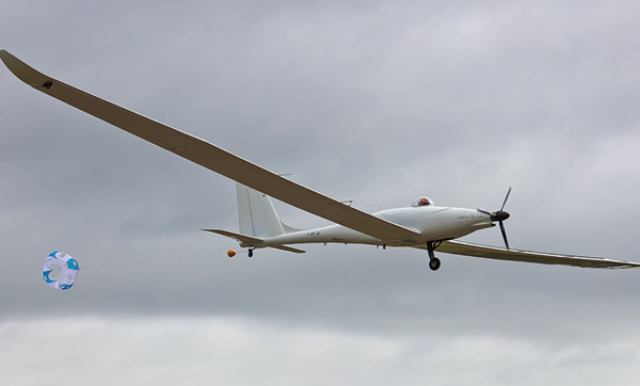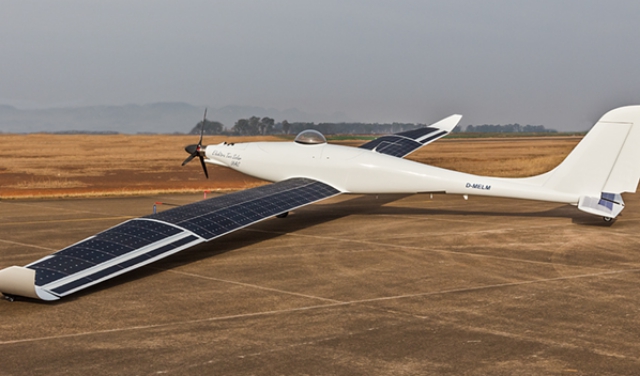commissioned its new redundant autopilot system on 30.08.2018 and successfully demonstrated several autonomous flights with its high-altitude long endurance aircraft Elektra Two Solar. For safety reasons, another pilot was on board, but not had to intervene at any stage of the flights.
With no problems and in less than ideal weather conditions, take-offs and landings took place. During the flights various parameters and modes of the whole system were tested.
“We have taken a giant step towards the stratosphere and are very optimistic that we will be able to fly in a short time with our next aircraft at altitudes up to 20 km. We are not yet able to achieve this goal with the current aircraft. However, in order to achieve this, we followed new paths in the manufacture of the next aircraft in process and production technology” Dr. Konstantin, managing director of the company said.
The high-tech company from the Bavarian Landsberg am Lech manufactures manned and unmanned aircraft for scientific and commercial tasks.
The added value is almost 100% in the company. There is no dependence on suppliers. The development of control algorithms and systems is supported by close cooperation with the DLR Institute of Robotics and Mechatronics.
The aircraft are characterized by long flight times and are able to carry payloads of up to 100 kg. The double-redundant, solar-electric propulsion system is powered by the sun.
Due to the 2 times redundancy in the electric propulsion system and the 3 times redundancy in the control, the aircraft are extremely reliable and safe. In addition, there is a robust construction of the structure that allows uncomplicated and economical operation of the systems.
The virtually noiseless operation meets today’s requirements for environmentally friendly aviation. The developed of the highly efficient “Energy-Saving-Concept” is supported by the latest state of the art extremely powerful solar cells.
One of the objectives of Elektra Solar is to be able to realize day and night flight missions for a wide variety of economically applications.
About Elektra Solar GmbH
The aircraft Elektra One was the first electrically powered ultralight aircraft in Germany and was developed by the Bavarian company PC-Aero. The first flight took place in March 2011 at Augsburg airport and lasted 30 minutes. Already in June 2015, Elektra One successfully completed an Alpine crossing as the first electrically powered aircraft. Here, the aircraft covered a 200km long track, partly at a peak altitude of over 3000m in about 2.5 hours.
By merging with the companies PC-Aero GmbH and Elektra UAS GmbH, the company was registered in 2016 as Elektra Solar GmbH in the commercial register. To this day, the technology is being further developed and, in the meantime, a complete family of solar-electric aircraft has been developed. Elektra Solar GmbH works with aerospace systems in the weight class from 10kg to 1000kg and can prove far-reaching experience in the certification of aircraft. A key focus of the development lies in the area of manned and unmanned, or optionally piloted aircraft with wings, as well as the autonomous control of helicopters.
Source: Press Release



I am interested in Electra Solar one. Is it possible to use this aircraft as a powered glider?
How much it increases the glide ratio (L/D) if the propeller is driven continuously by the solar power alone, not with batteries?
Jukka,
I suggest that you click on the link to Elektra Solar in the article and contact the manufacturer…